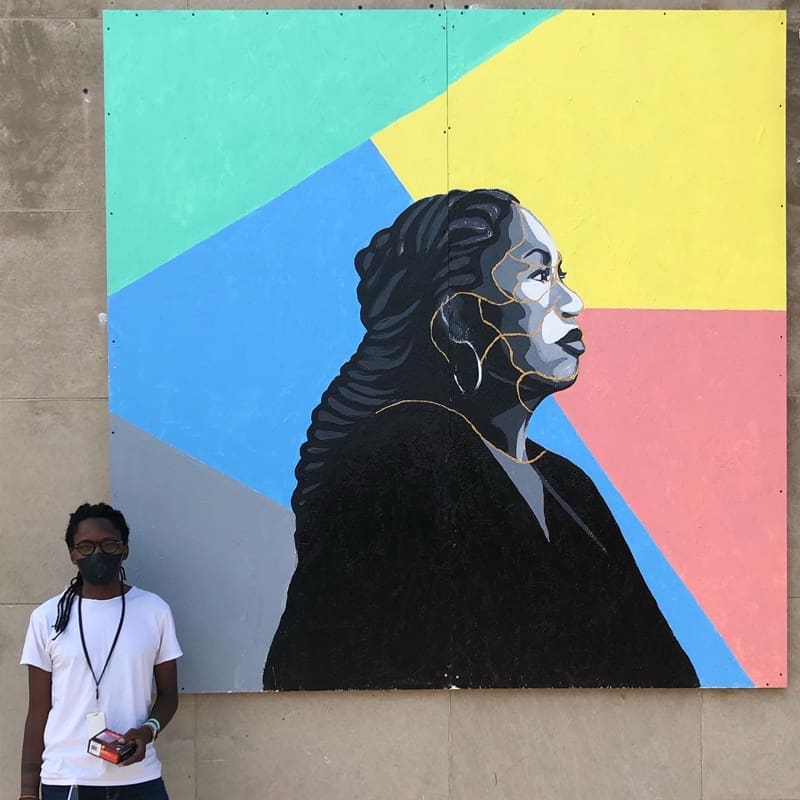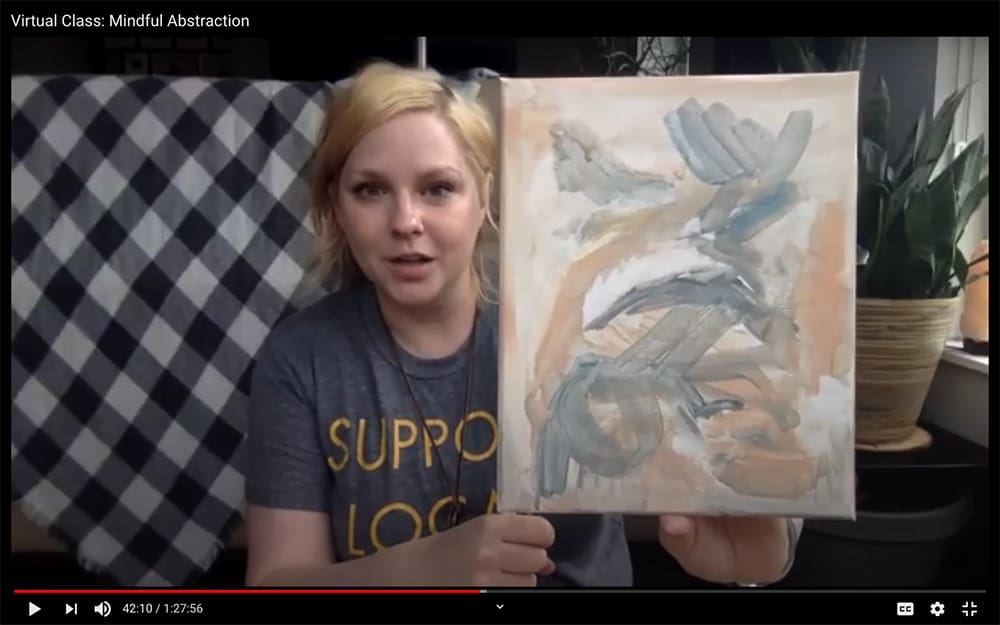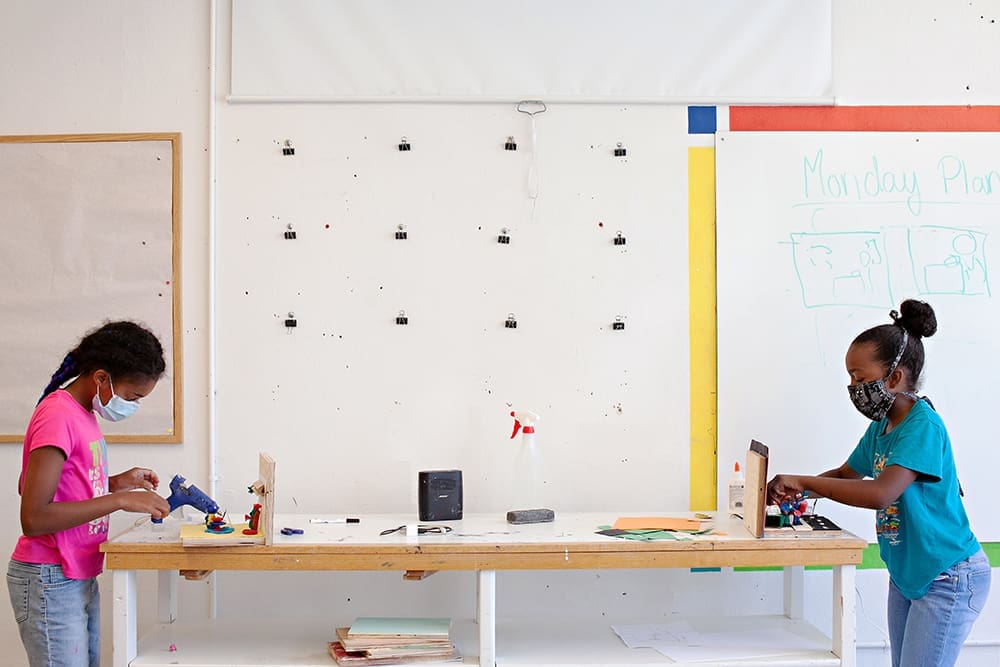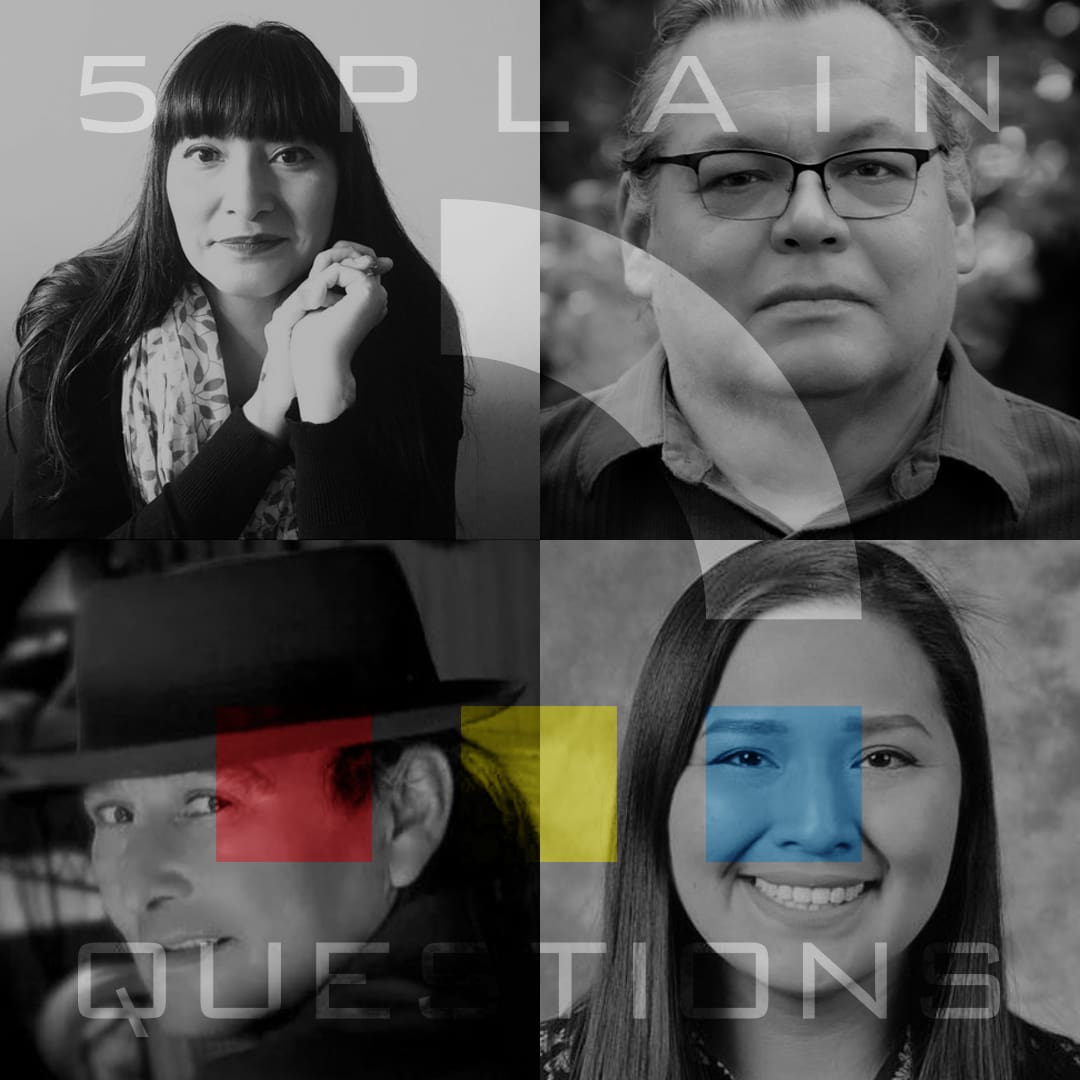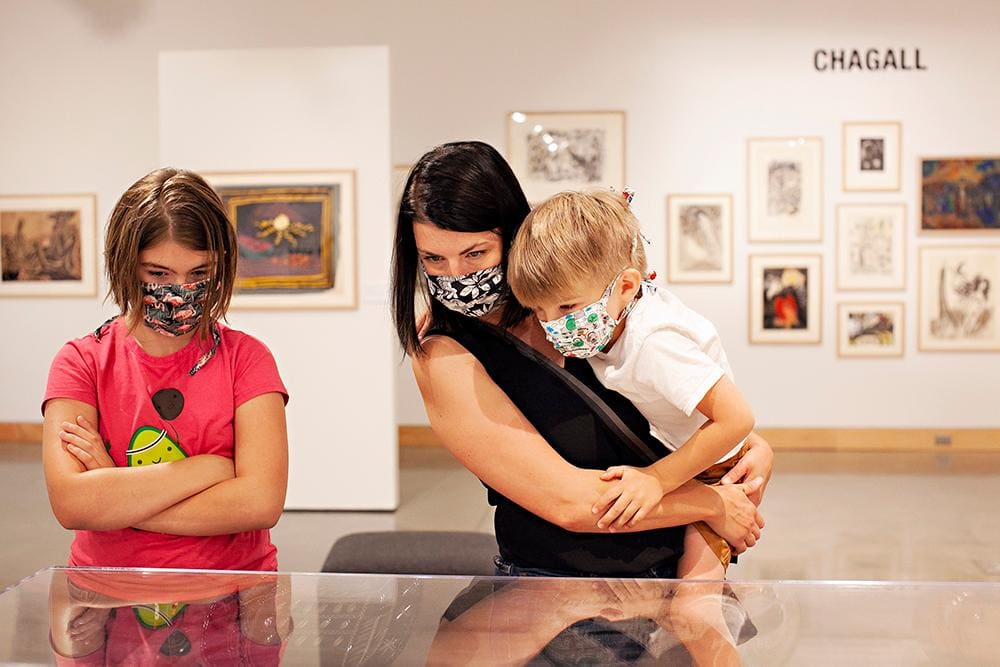You’re Our Story
At Plains Art Museum, we have so many stories to tell, and our most important story is YOU. As this historic year draws to a close we would like to reflect on where we started, where we are, where we are headed – and you.
Throughout the next 90 days we are sharing statements from Museum leadership, Staff, as well supporters as we reflect on the past and look forward to the future. We are Your Art Museum and You’re Our Story.
Donate anytime before December 31, 2020 to our end of year campaign.
Leaders meet challenges head on. Rather than hiding from reality, they see clearly and adapt to find ways to improve. 2020 has left us with the devastating reality of a pandemic, as Covid-19 has continued to circulate across the entire United States, leaving hundreds of thousands of Americans dead in its wake. This year has also been one of deep reflection on systemic white supremacy and pervasive inequity that permeates all aspects of American life. This was propelled by the devastating murders of George Floyd and Breonna Taylor that added yet another tragic chapter to the Civil Rights Era that we are living in.
Plains Art Museum sees our reality. In response, we have engaged in the creation of several new programs and initiatives. Because there is no safe way to gather large groups of people, we unfortunately could not offer Fargo’s premier art party – the annual Spring Gala, presented by Bell Insurance. Instead, we adapted and created a virtual art auction that not only raised support for the Museum but also provided support for many of the participating artists. The pandemic has also changed the way that we engage as a leader in arts education – resulting in the creation of podcasts, virtual classes, virtual talks, downloadable learning opportunities, and other content that enables all audiences to engage in the artistic and learning opportunities that they need. Audiences who continue to visit us in person have been delighted to find that we take safety seriously. Many have also been impressed to find some of the best exhibitions ever offered in the region, including a group exhibition featuring works by Picasso, Renoir, and many of the 20th century’s most notable artists associate with European Modernism as well as a major solo exhibition by Dyani White Hawk.
In response to the realities of widespread inequity and the need to cultivate empathy, we have continued to rethink our work top-to-bottom and ask ourselves vital questions about who we are, what we do, and if we have truly been an art museum for everyone. Upon re-opening, we helped facilitate a new community-organized exhibition titled Be, Exist, commissioned a mural dedicated to Toni Morrison, began new collaborative partnerships, and furthered the creation of an institution-wide initiative called Voices of Creative Change. These projects and initiatives only scratch the surface of what will be long-term work in supporting the livelihoods of BIPOC artists, creatives, and culture bearers. We thank each of you for participating in and supporting our work as your story is our story. It is truly an honor for us to continue to provide regional artistic, safety and educational leadership.
– Andy Maus, Director and CEO, Plains Art Museum
The pandemic has devastated families and communities. It has also left museums across the country in crisis – both in a sudden and dramatic loss of revenue as well as an equally urgent need to shift how we work with the public. Plains Art Museum met the challenge of engaging people in the arts that they need with many new programs and initiatives. Within days of announcing our temporary closure, we had a plan to create podcasts, downloadable learning opportunities, virtual classes, online exhibitions, therapeutic programs, and more. In times of crisis, people need the arts more than ever, and we are honored to be North Dakota’s flagship art museum, offering more ways to engage now than ever before. Now as we have re-opened, visitors can choose to Visit Us Virtually or Visit Us in Person.
And then there is the financial challenge of sustaining our operation and meeting increased need despite dramatic loss of revenue. When the pandemic started, we launched our “Let’s Get Through This Together Campaign,” which is an opportunity for everyone to make sure that their art museum can thrive during and after the crisis. The philanthropic community continues to meet this community need with support large and small. We would like to extend our most sincere gratitude to the generous supporters of this campaign including the Fargo-Moorhead Convention & Visitors Bureau, Arts Midwest and the Mellon Foundation, The Arts Partnership, the North Dakota Council on the Arts, and the hundreds of individuals, businesses and other supporters who continue to provide emergency support.
– Andrew J. Maus, Director and CEO, Plains Art Museum
Crisis creates necessity. There are times in our history when an incident shutters the perceived arch of motion. Suddenly the assumptions of the future are put in question, and plans go unfulfilled. In 2020 we all faced this reality. We found limitations in isolation, suddenly we weren’t able to come together and gather. We weren’t able to invite people into our museum to view our newest exhibitions. In the moment some decided to withdraw and hold back to see what would happen, while others looked around to see how they could pick up and move forward. Some asked “How do we make this work?” and started to look at programs and innovative ideas earmarked for 3-10 years down the road, and decided that now would be the time to dust off those ideas and give it a try. Inspired by Zoom meetings, we looked at how we could put programming online, make it interactive, make the technology available to those who could use it.
The idea of a podcast conversation with Native American and Indigenous artists played in my head for months, if not for two years. Unsure how to make that happen, and/or not willing to put the time into making it happen I shelved it. As I was home with very little to do I realized that many artists must be in a similar position, so I decided now was the time to learn a new type of craft.
Since the Water Protector protests at Standing Rock, and the failure for the general public to understand where Indigenous people were coming from in their grievances with the United States government, I decided to create an avenue of approach in dialogue. Using audio only, I sought to humanize the voice of Indigenous people with its most intimate sense, by removing any visual references or barriers someone may have when listening to another human being. I want our listener, be it a suburban mom in Bismarck, a college sophomore in Fargo, a tribal councilman in Turtle Mountain, or an Indigenous youth in Mandan, to close their eyes and be present with these speakers as they told their personal stories, shared in their successes, walk with them as they explore their memories, and laugh at their anecdotes.
5 Plain Questions isn’t about programming for a museum, or job security for staff on its show. It’s not about making non-Natives feel safe, or giving a platform to an Indigenous artist. It’s about connecting people, speaker and listener, and allowing someone to relate to another human in a shared experience.
Listen to episodes of 5 Plain Questions on your favorite Podcast app or here.
– Joseph Wiliams, Director of Community Education & Director of Native American Programs, Plains Art Museum
The most critical expenses for any business, especially nonprofits, to cover are those related to General Operations . . . salaries, utilities, facility upkeep, insurance—the least “sexy” but keep-the-lights-on expenditures. Conversely . . . and perhaps perversely . . . the most difficult type of funding to secure is for General Operations. For nonprofits, funders relish supporting programs; something that, when evaluated over its course and particularly at the end, made a difference to those who participated in program projects and activities. But rarely Gen Op.
The trio of pandemics—health, equity, and economics—drew into sharper focus, even exacerbated, this dilemma.
Fortunately, and early on in COVID’s rampage, numerous private and public foundations and notably governmental agencies responded with funding opportunities that emphasized covering the basics; the more-often-than-not keep-the-doors-open General Operation needs.
For Plains Art Museum, the first such support came from the Fargo-Moorhead-West Fargo Convention and Visitors Bureau. Then followed the Coronavirus Aid, Relief, and Economic Security Act (CARES Act I) with direct aid—think: PPEs and wage protections with forgivable repayment provisions. CARES I also distributed support to other government agencies, such as the National Endowment for the Arts, National Endowment for the Humanities, and Institute of Museums and Library Services. It also provided cash to state governments that they would later distribute funds via Economic Recovery Grants (ERGs), such as through North Dakota Council on the Arts CARES, and North Dakota Department of Commerce. Then followed foundations, like Art Bridges/Bridge Ahead, Andrew W. Mellon Foundation/Arts Midwest: Resilient Arts Fund and Fargo Moorhead Area Foundation.
Plains Art Museum and hundreds of other American arts nonprofits have been the fortunate and necessary recipients of some or all of the above opportunities. But it has taken a pandemic health scourge like COVID to prove to funders of all stripes that providing qualified nonprofits with General Operational support—with few if any strings attached but a final accounting—is an OK thing to do. That not only are we worthy of support, we are capable of determining the best application for these funds that help us stay publicly accessible during a time when, especially for the arts, the nation needs places of change from the current norm, healing, respite, and safe gathering.
Sandy Thompson – Director of Possibilities
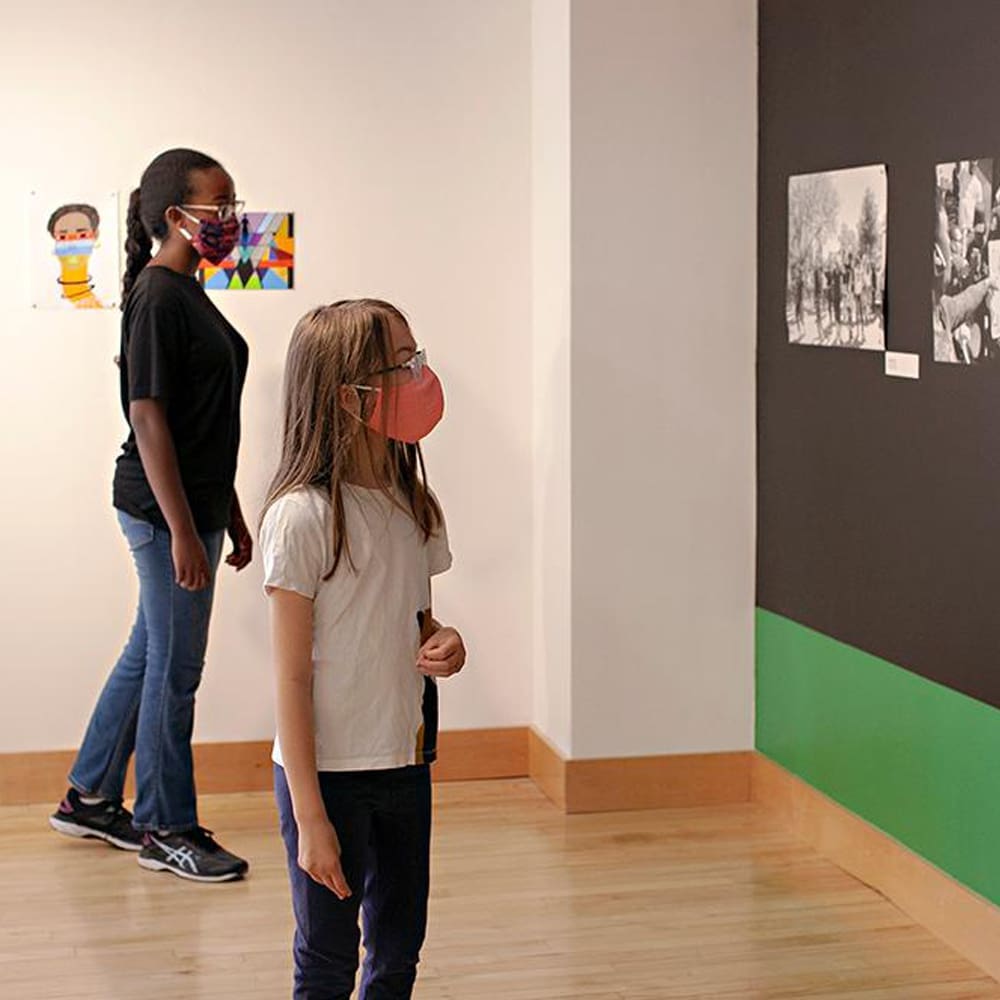
The past year has presented challenges from every direction: Health. Economics. Civil Rights & Equity. Though as difficult as it has been for all of us, 2020 has also been an important one, filled with reflection and learning of our individual and collective values, responsibilities, and dreams for the future.
At Plains Art Museum, we are turning dreams of the future into programming designed to inspire, cultivate creativity and problem-solving skills, build empathy, and nurture multicultural understanding.
Art museums are often organizations that encourage love and invite investment in a community. When Plains Art Museum moved into our current space in downtown Fargo in 1997, the idea of taking an old warehouse and turning it into something inspirational was unfamiliar to many people in the region. Yet a Downtown Renaissance soon followed with innovative ideas and designs to make Downtown Fargo a motivational example of how to create an energized downtown that also respects its history.
What does the next 20 years look like? At the Museum, we have a vision for changes and additions to our building that present a future designed to stimulate and realize possibilities and make the Red River Valley a destination for arts, culture, design, and creative thought.
Art museums are more than buildings, though. We are organizations designed to deliver engaging experiences and programs. Plains Art Museum has developed new programs to cultivate creativity and multicultural understanding outside of our walls, including virtual classes, downloadable content, artist videos, and podcasts like “5 Plain Questions” that reveals Native American artists and leaders from their point of view. Much of this work will continue into 2021 and beyond.
And last but not least, art museums reflect organizational as well as community values. At Plains Art Museum, we value our position as a leader in elevating the diverse voices of creators, culture bearers, and futurist innovators. Along with these values come several initiatives, most notably our Creativity Among Native American Artists (CANAA) Initiative and our newly established Voices of Creative Change Initiative. These initiatives intersect with several projects like our recent Be, Exist exhibition, and our soon-to-be reenergized Creative Community Leadership Institute (CCLI). CCLI is for creatives and community builders in North Dakota, South Dakota and Minnesota and will be implemented with partners Springboard for the Arts (St. Paul, MN) and Racing Magpie (Rapid City, SD).
These examples just barely scratch the surface of what the Museum’s future in the community looks like. Together with you, it is ours to shape and I hope you join us in helping create the future that you envision.
– Andrew Maus, Director and CEO

Because of you Plains Art Museum . . .
- Confirmed its position as the community’s “front porch” . . . a safe haven for respite and contemplation in a time of uncertainty and anxiety.
- Connected with 47,000+ local, regional, national, and international visitors all while implementing procedures that kept our supporters safe.
- Generated historic record attendance months in January and February with the help of PlainsArt4All, our free general admission initiative.
- Created free public programming such as artists’ lectures, workshops, and gallery talks
Assisted in providing access for 2,000+ K-12 students in rural communities to enjoy Museum exhibitions and art making experiences. - Brought the community International Potlucks that engaged the breadth of Fargo-Moorhead-West Fargo’s growing diverse populations.
As the Museum closes out a confrontational yet enlightening 2020—a year that we could not have navigated as successfully without your support—we invite you to continue to enhance being “our story.” Through a gift to our Year-End Campaign—with a goal of $35,000—the Museum will be able to further and expand our community engagement.
We greatly appreciate your consideration of a gift. Your generosity at any level will be immensely valued. For questions, please call or email Sandy Thompson, Director of Possibilities, at 701.551.6122 or sthompson@plainsart.org.
Sandy Thompson – Director of Possibilities
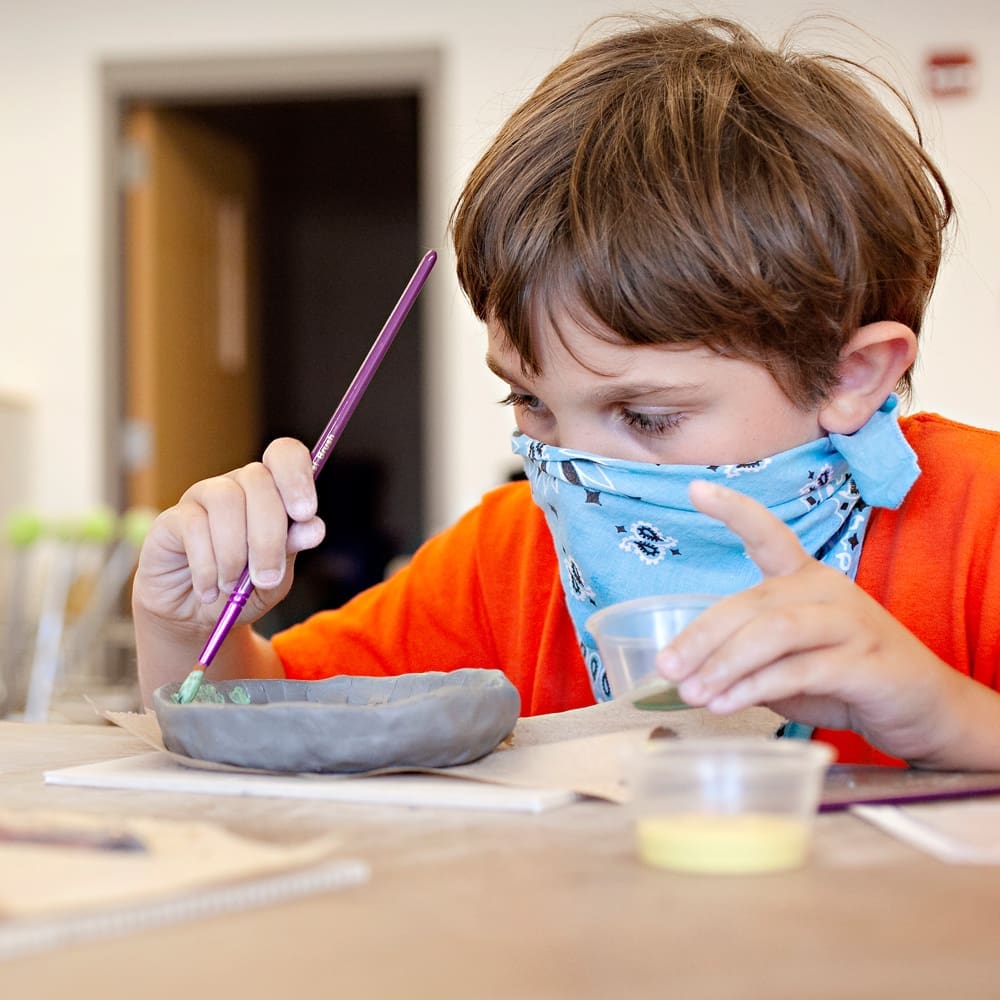
A Year for Adapting.
Kid Quest, Tuesdays for Toddlers, Summer Camps, Buzz Lab, Open Studio – Over the years Plains Art Museum has touched hearts, inspired creativity, and encouraged self-expression for children and adults throughout the region.
And while the Museum and Katherine Kilbourne Center for Creativity continued to facilitate arts access for our community, 2020 challenged our incredible Education Department as to how the Museum could continue to provide programming safely – and effectively. By the end of March 2020 – while Museum galleries and studios were still closed to the public – our staff shifted to a virtual format. Teaching artists instructed students via Zoom, and Plains Art Museum launched Visit Us Virtually, providing the public with guided meditations, materials highlighting artists in our collection, and a downloadable coloring book. Over the spring the Museum also added video resources and tutorials on our YouTube page.
We also were able to shift both our teen internship, Buzz Lab, and our Northern Plains Summer Art Institute to virtual – or socially distanced – formats allowing the Museum to serve art-interested teens throughout the summer.
In July, we remained committed to community safety and were able to reopen our in-person classes with lower capacities and cleaning protocols, all while continuing to offer virtual classes to children and adults who still wanted them.
All of this happened with tremendous support from organizations like Art Bridges, North Dakota Council on the Arts, and the North Dakota Department of Commerce – and from the continued support of our community. As this historical year draws to a close, we offer for your consideration to make a tax-deductible gift to Plains Art Museum’s End of Year initiative – You’re Our Story. We look forward to serving you for years to come and know that your support and spirit made this year possible.
With Gratitude,
Joe Williams, Director of Community Education and Native American Programming
Carol Prafcke, Director of Studio and School Education
Sara Watson Curry, Coordinator of Community Programs
Amanda Heidt, Studio and School Education Coordinator + Hannaher’s, Inc. Print Studio Manager
We greatly appreciate your consideration of a gift. Your generosity at any level will be immensely valued. For questions, please call or email Sandy Thompson, Director of Possibilities, at 701.551.6122 or sthompson@plainsart.org.

